I am trying to use AWS Elemental MediaLive via NET SDK.
(Dependencies Info: Net Core 6.0 & AWSSDK.MediaLive 3.7.106.36 & AWSSDK.Core 3.7.106.42)
My code looks like this
[HttpGet("Create-New-Channel")]
public async Task<IActionResult> CreateNewChannel()
{
try
{
CreateChannelRequest req = new CreateChannelRequest
{
Name = $"Create Channel Name-{DateTime.Now:dd-MM-yyyy HH-mm-ss}",
EncoderSettings = new EncoderSettings(),
ChannelClass = ChannelClass.SINGLE_PIPELINE,
InputSpecification = new InputSpecification
{
Codec = InputCodec.AVC,
MaximumBitrate = InputMaximumBitrate.MAX_10_MBPS,
Resolution = InputResolution.SD
}
};
InputAttachment iA = new InputAttachment
{
InputAttachmentName = $"Input Attachment Name-{DateTime.Now:dd-MM-yyyy HH-mm-ss}",
InputId = "_______"
};
req.InputAttachments.Add(iA);
OutputDestination optDes = new OutputDestination
{
Id = "My-problematic-ID"
};
optDes.Settings.Add(
new OutputDestinationSettings {
Url = "s3ssl://my-output-bucket/first-channel/DesA"
}
);
req.Destinations.Add(optDes);
CreateChannelResponse res = await _client.CreateChannelAsync(req);
return Ok(res.HttpStatusCode);
}
catch (AmazonMediaLiveException mlex)
{
throw mlex;
}
}
Id property in OutputDestination is required. (A combination of letters & numbers & hyphens).
So, I tried some random string ("My-problematic-ID").
Then, this line CreateChannelResponse res = await _client.CreateChannelAsync(req);
returns
Amazon.MediaLive.Model.UnprocessableEntityException: Destination "My-problematic-ID" is not referenced ---> Amazon.Runtime.Internal.HttpErrorResponseException: Exception of type 'Amazon.Runtime.Internal.HttpErrorResponseException' was thrown. at Amazon.Runtime.HttpWebRequestMessage.GetResponseAsync(CancellationToken cancellationToken) at Amazon.Runtime.Internal.HttpHandler`1.InvokeAsync[T](IExecutionContext executionContext) at Amazon.Runtime.Internal.Unmarshaller.InvokeAsync[T](IExecutionContext executionContext) at Amazon.Runtime.Internal.ErrorHandler.InvokeAsync[T](IExecutionContext executionContext) --- End of inner exception stack trace ---
So, my questions are What is the right Id for OutputDestination class and How can I make a "reference" to this thing ?
